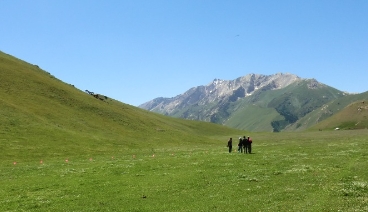Unraveling the History of Earth’s Climate Through Climato-Genetic Geomorphology
Climato-genetic geomorphology is a cutting-edge field of study that seeks to understand how Earth’s climate has evolved over time by examining the physical features of the landscape. By analyzing the shapes and patterns of landforms, scientists can uncover valuable insights into the past climates that shaped our planet.
Tracing the Effects of Climate Change
One of the key aspects of climato-genetic geomorphology is the study of how different climates impact the erosion and deposition processes that shape the Earth’s surface. By examining features such as river valleys, glacial moraines, and coastal cliffs, researchers can trace the effects of past climate changes on the landscape.
Deciphering Climate Signals in the Landscape
Through careful analysis of the sediments, soils, and rocks that make up the Earth’s surface, scientists can decipher climate signals that have been preserved over time. For example, the presence of certain minerals or sedimentary layers can indicate periods of intense rainfall, glaciation, or arid conditions.
Reconstructing Past Environments
By combining data from climato-genetic geomorphology with other fields of study such as paleoclimatology and paleoecology, researchers can reconstruct past environments with remarkable detail. This interdisciplinary approach allows scientists to paint a comprehensive picture of how Earth’s climate has changed over millions of years.
Predicting Future Climate Trends
Studying the history of Earth’s climate through climato-genetic geomorphology not only helps us understand the past, but also allows us to make more accurate predictions about future climate trends. By gaining insights into how different factors such as temperature, precipitation, and sea level have influenced the landscape in the past, scientists can better anticipate how these factors may continue to shape our planet in the future.
In conclusion, climato-genetic geomorphology is a powerful tool for unraveling the history of Earth’s climate and gaining a deeper understanding of the forces that have shaped our planet. By examining the physical features of the landscape, scientists can piece together the puzzle of Earth’s climatic past and use this knowledge to inform future research and decision-making in the face of climate change.

